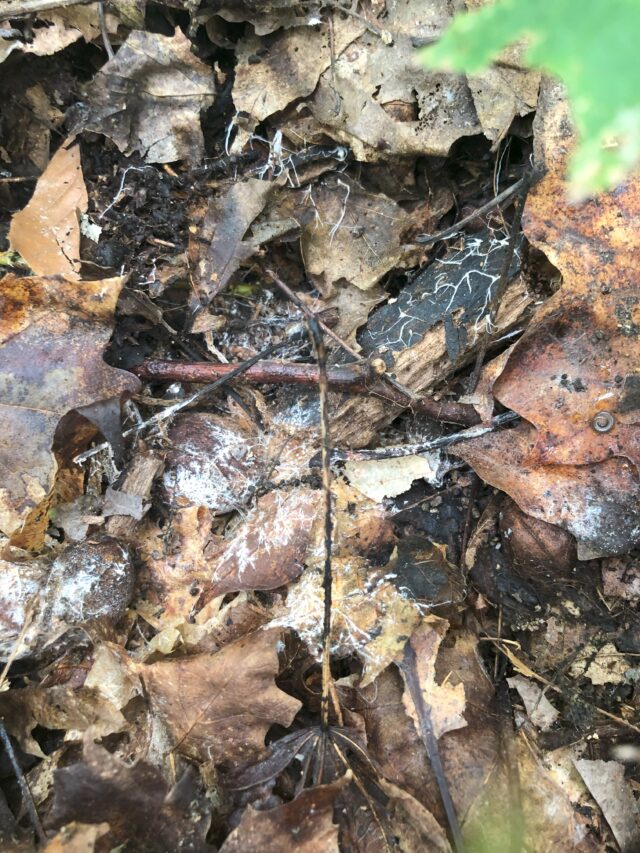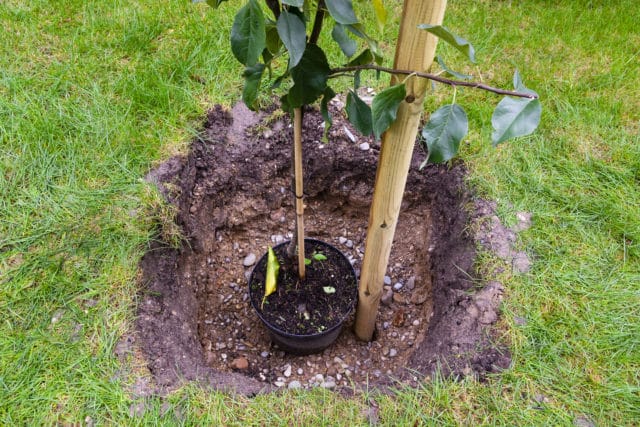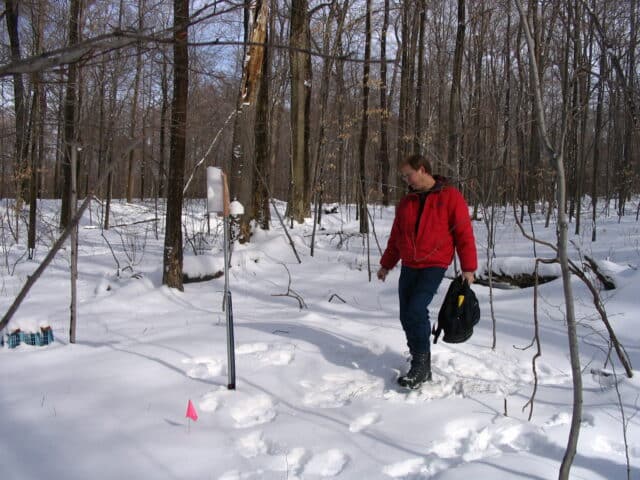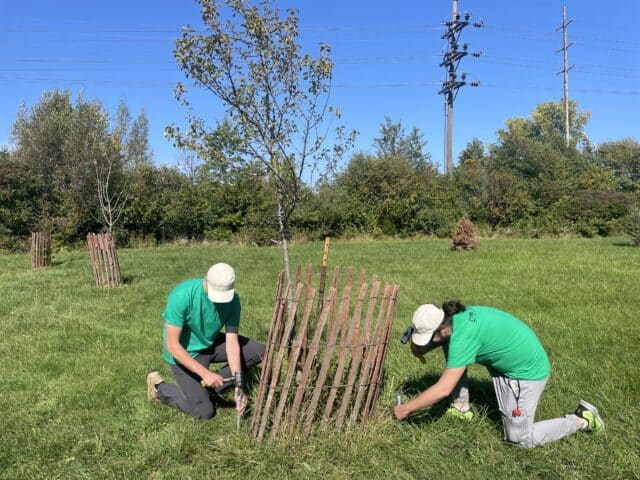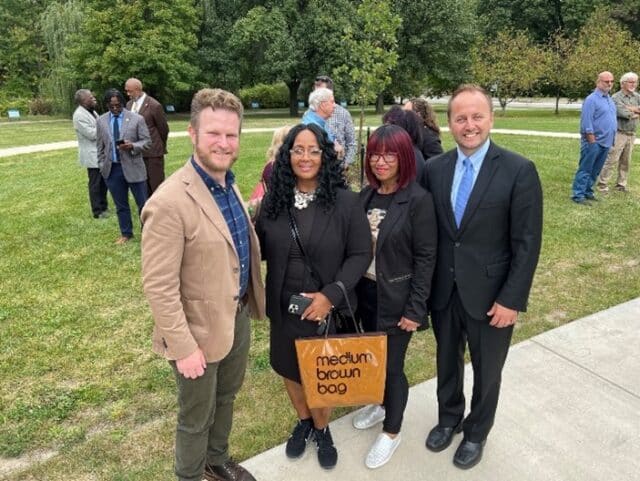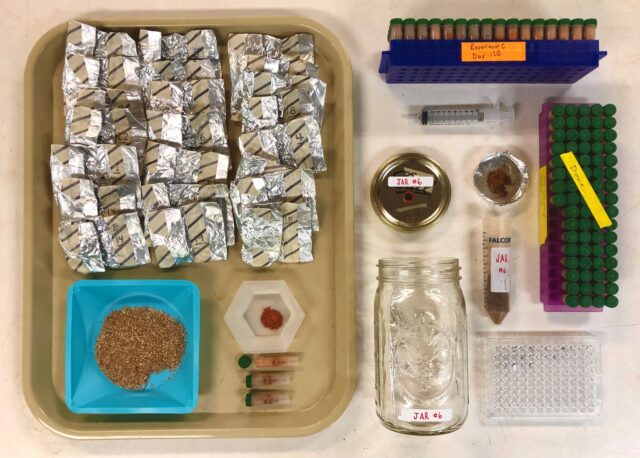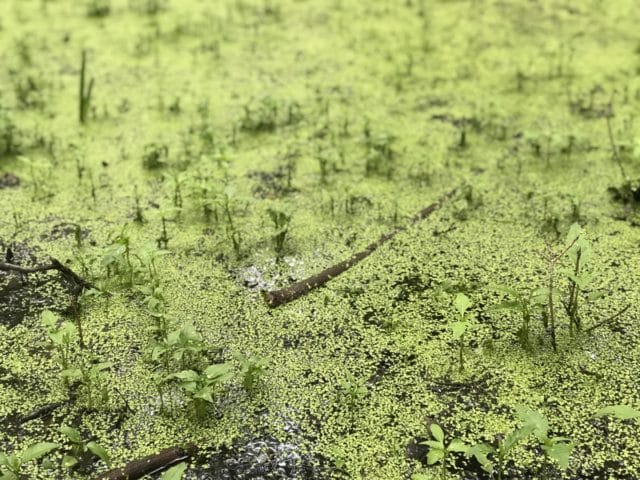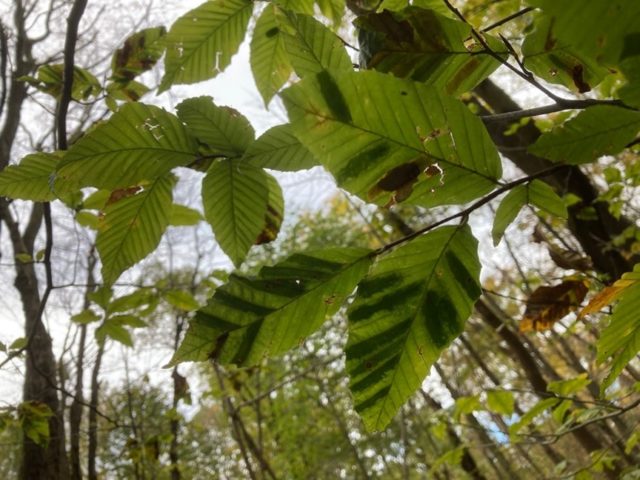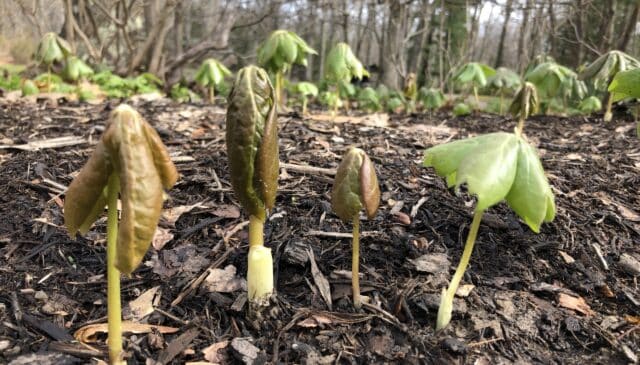Can inoculated soils promote healthy urban trees? Preliminary results
January 23, 2024

We wanted to share the latest update from an exciting Holden project – preliminary results are in! Please note that we will be collecting data for a few more years, and submitting this work for peer review at a scientific journal, so these results are not yet conclusive. Stay tuned for the final results still to come!
The Holden Forests & Gardens team working on the Healthy Urban Tree Canopy Soil Inoculation Project (HFG-SIP) have been busy.
The Cuyahoga County Healthy Urban Tree Canopy Program (HUTC) is an initiative of Cuyahoga County Department of Sustainability, Cuyahoga County Planning Commission, Cuyahoga Soil & Water Conservation District, and Cuyahoga County Board of Health to promote healthy tree canopy. The trees used in this study were planted in part by the residents of Cuyahoga County through a public grant from the HUTC Grant Program.
About the Soil Inoculation Project
This project is, to our knowledge, the first multi-site- and multi-year-replicated experiment testing the effectiveness of live soil inoculation in urban canopy restoration. In initiating this project, we had a few major goals in mind:
- To design and implement a novel experiment to test the viability and effectiveness of using live forest soil inoculum to improve outcomes for native canopy trees in urbanized environments.
- To effectively communicate with our community partners about experimentally supported recommendations for best planting and care practices for urban trees, as well as about the effectiveness of live forest soil inoculation in supporting tree health.
- And to build strong and trusting partnerships with municipalities, community development groups, not-for-profit organizations, and county leaders.
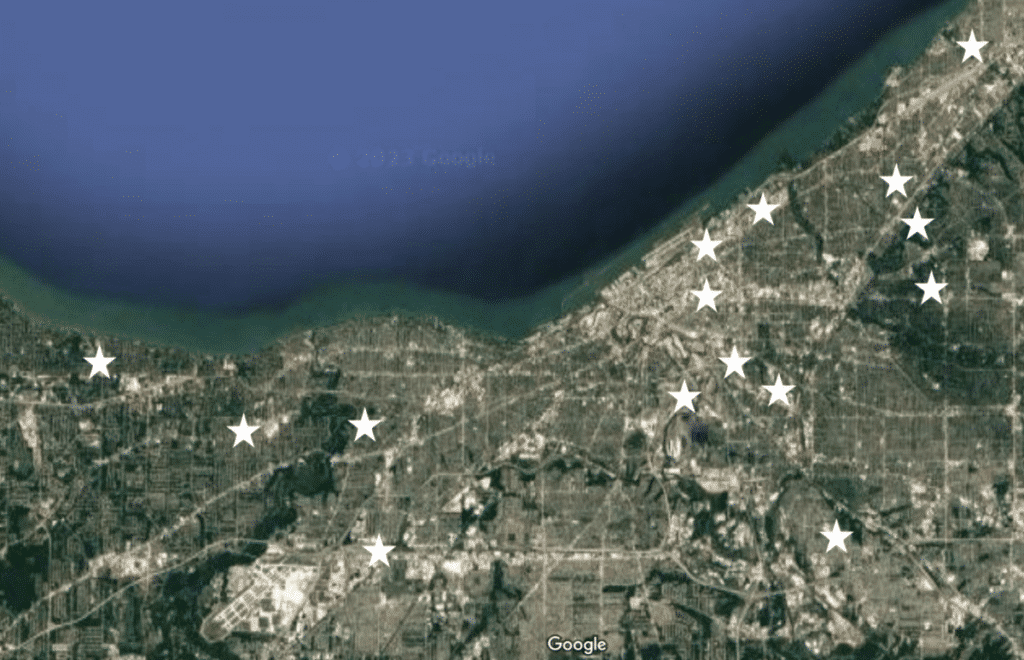
Project Updates by the Numbers
Since the pilot application of the Soil Inoculation Project, we have added 721 trees into the experiment across nine planting groups. Beginning this fall and extending through spring 2024, we will be adding an additional 434 trees at five new and six total planting sites. In total, over 1,100 trees are included in the project, which spans across large portions of Cuyahoga County.

Our project sites cover all sorts of urban green spaces, including libraries, school yards, courtyards, cemeteries, city parks, boulevards, street trees, and more! Each site within the study has a slightly different microclimate, different soil conditions, and different human impacts.
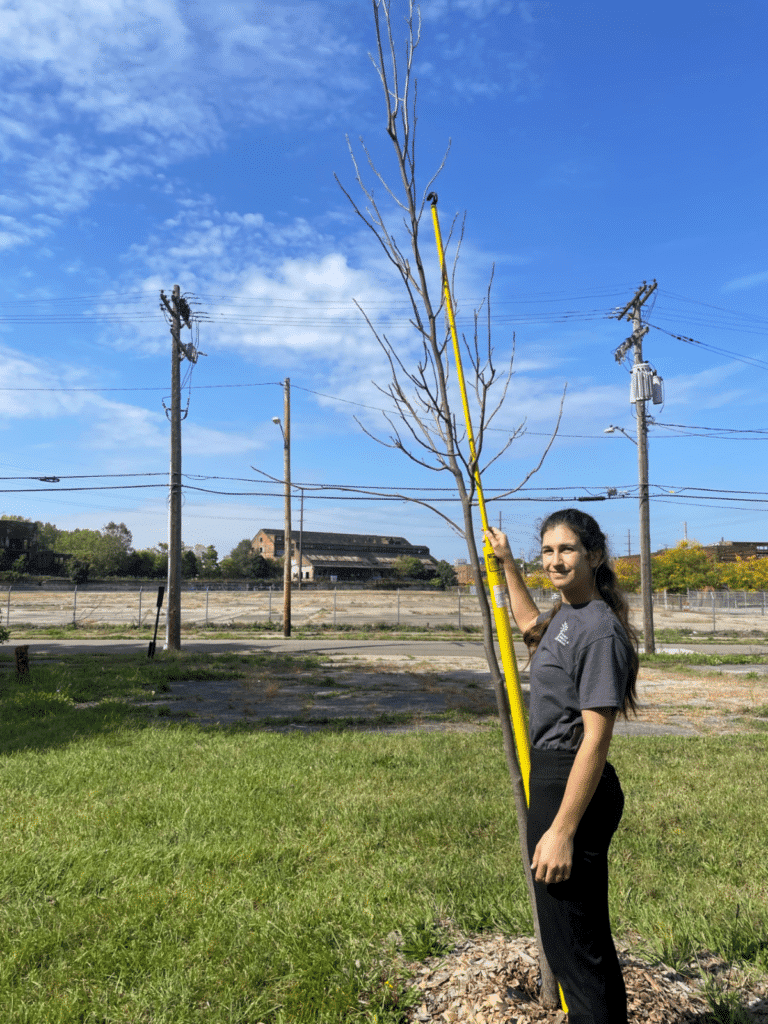
By replicating the study in many sites around our region, we hope to understand the impacts of these differences on tree outcomes as well as whether the effect of soil inoculation occurs across different locations.
Throughout this fall, we have been out to each of the previously planted project sites to remeasure each tree and to record notes on tree condition and survivorship. We are also using mapping software to create site maps and to overlay environmental variables.
Lastly, we are collecting small amounts of soil from the base of trees for soil quality testing and identification of soil fungi (more on this coming soon!). Through this process, we will be able to investigate how environmental and soil factors influence tree success for different species and with or without added soil inoculum.
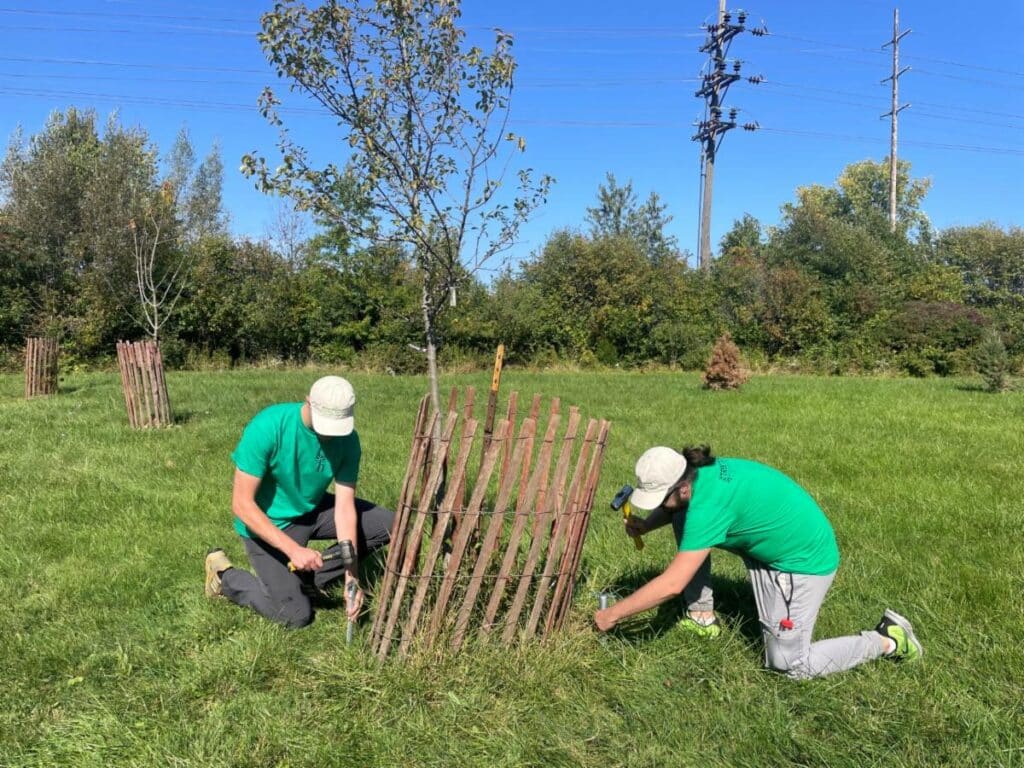
Early Project Results
In the first few years after transplant, new trees are at their most vulnerable. After one year post transplant, we expect that trees have begun to adjust to their new locations. This entails tolerating environmental pressures, forming associations with soil microbes, and beginning to grow both below and above ground, occupying new soil and air space.
Differences in transplant protocols and aftercare may be consequential for tree success (see Holden Forest and Garden’s Tree Selection Guide for guidance on tree selection and planting). Beyond planting and aftercare, species selection may impact survivorship, as some tree species are more or less tolerant to pressures like soil compaction, heavy metal or ozone pollutants, soil pH, and road salt. Tree tolerance to these pressures is also listed in the Tree Selection Guide linked above.
In our analysis of tree survival across species, we found that most trees had high survivorship, with 18/23 species with 100% surviving individuals after one year. Two species, tulip tree (Liriodendron tulipifera) and sweetgum (Liquidambar styraciflua) had lower than 75% survivorship. In the instance of sweetgum, only three individuals were planted, so while survival was low, the percentage only represents a few trees.
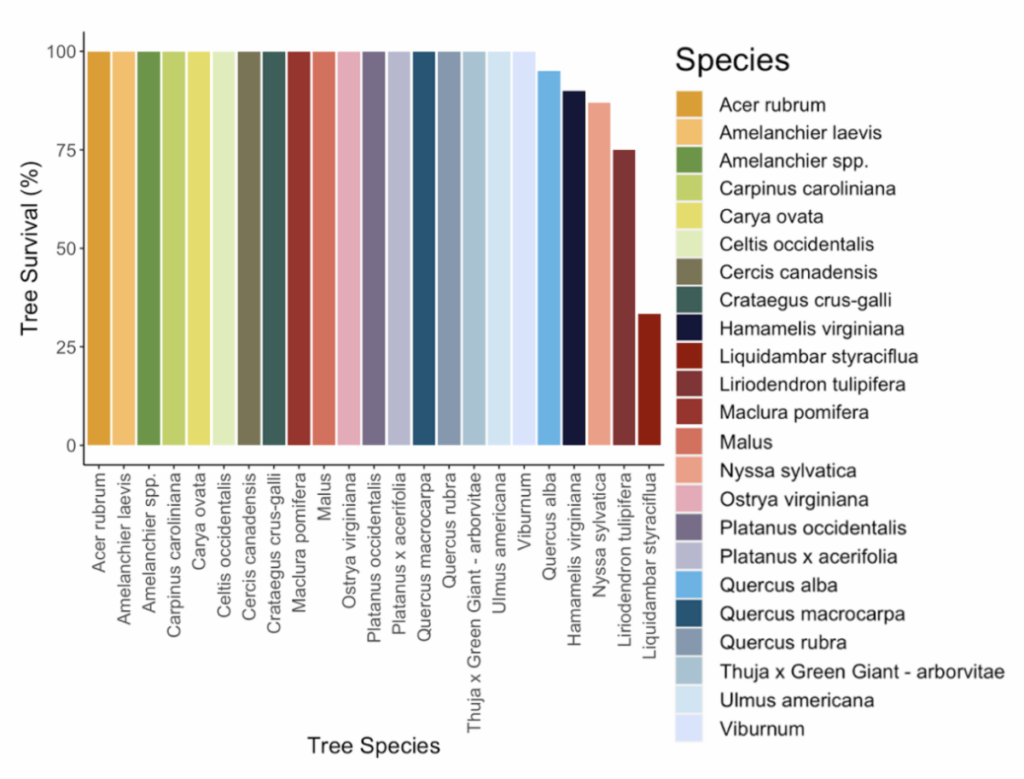
Environmental factors range between planting sites. Five of the sites planted in 2021 or 2022 were included in this year one analysis, as measurements this fall are ongoing.
Of the sites that we measured, we found significant differences in tree growth but not survivorship. One site in particular (coded as site C in the figure below, for privacy) had less growth over the course of the year than the other four sites, but had high survivorship along with sites A, B, and D.
Factors that may explain site-to-site variation in tree growth and survivorship include the age of the tree prior to planting, the planting protocol and aftercare regiment, and variation in environmental factors (including but not limited to soil compaction, air and ground pollution, deer and herbivore impacts, and human interactions).
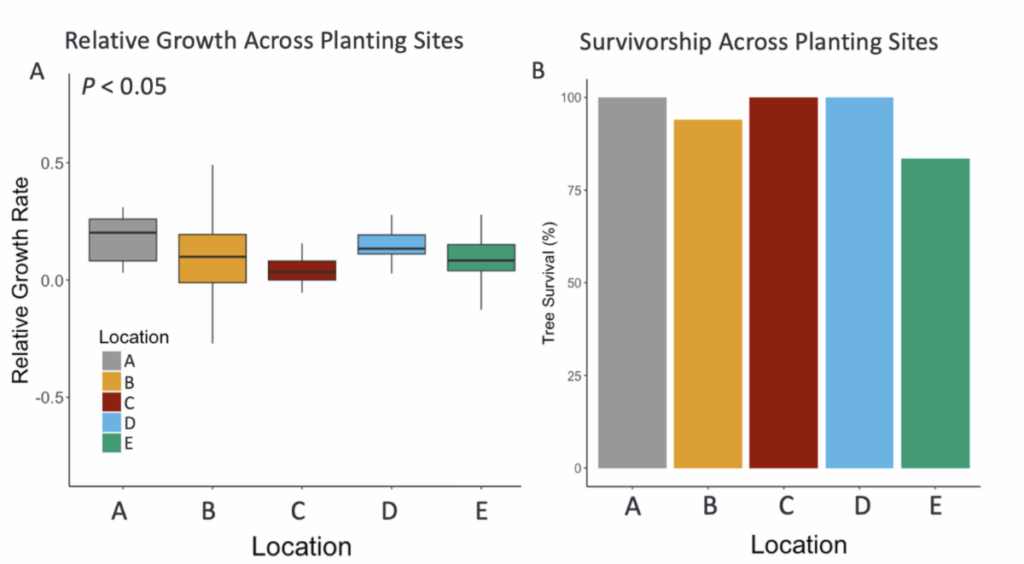
Biological interactions are happening constantly, but the pace at which new associations establish may happen slowly. Over the course of this past growing season, fungal hyphae and plant roots likely began to interface, forming mycorrhizas (“myco” means fungus and “rhizo” means root, so a mycorrhiza is literally fungal growth on or within a plant root, aiding plant function).
When mycorrhizas are successfully established, trees benefit from improved access to soil nutrients and improved tolerance to poor soil conditions including drought, waterlog, and soil pathogens. Growth responses may be delayed as disparities between trees with and without mycorrhizal associations intensify over time.
Thus far, we have not seen significant differences in growth and survivorship between treated trees (which received live soil inoculum) and control trees (which did not receive inoculum). We did see greater variation in growth rate in treated trees, suggesting that some individuals may be beginning to respond to treatment before others.
We observed slightly lower survivorship in treated trees, but there was no statistical evidence that these differences related to soil inoculation.
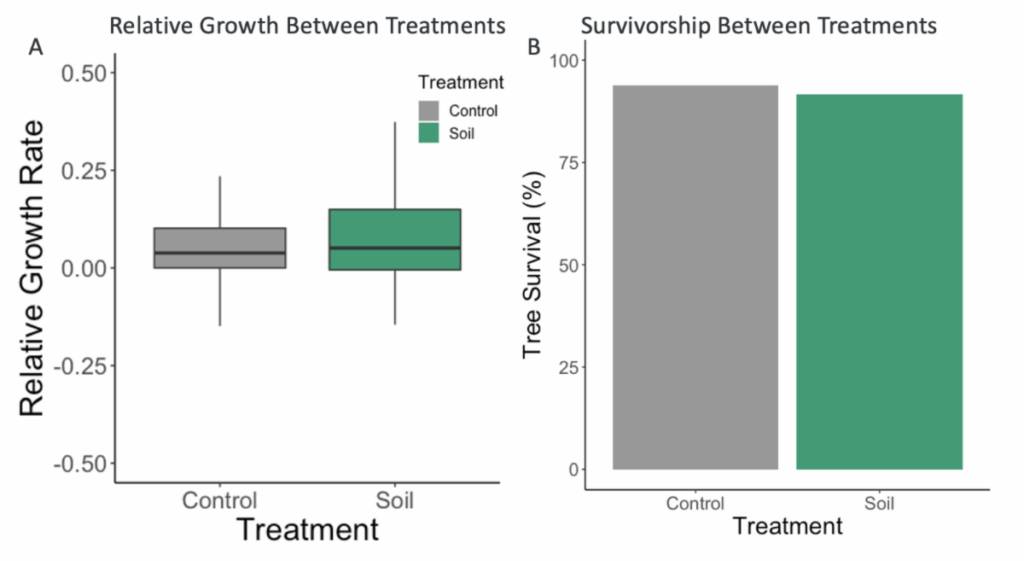
Meet the Researchers
The HF&G Soil Inoculation project is facilitated by a small team of researchers based at Holden Forests & Gardens and Bartlett Tree Experts Laboratories. We are collaborating on every level of the project from development to implementation and data analysis!
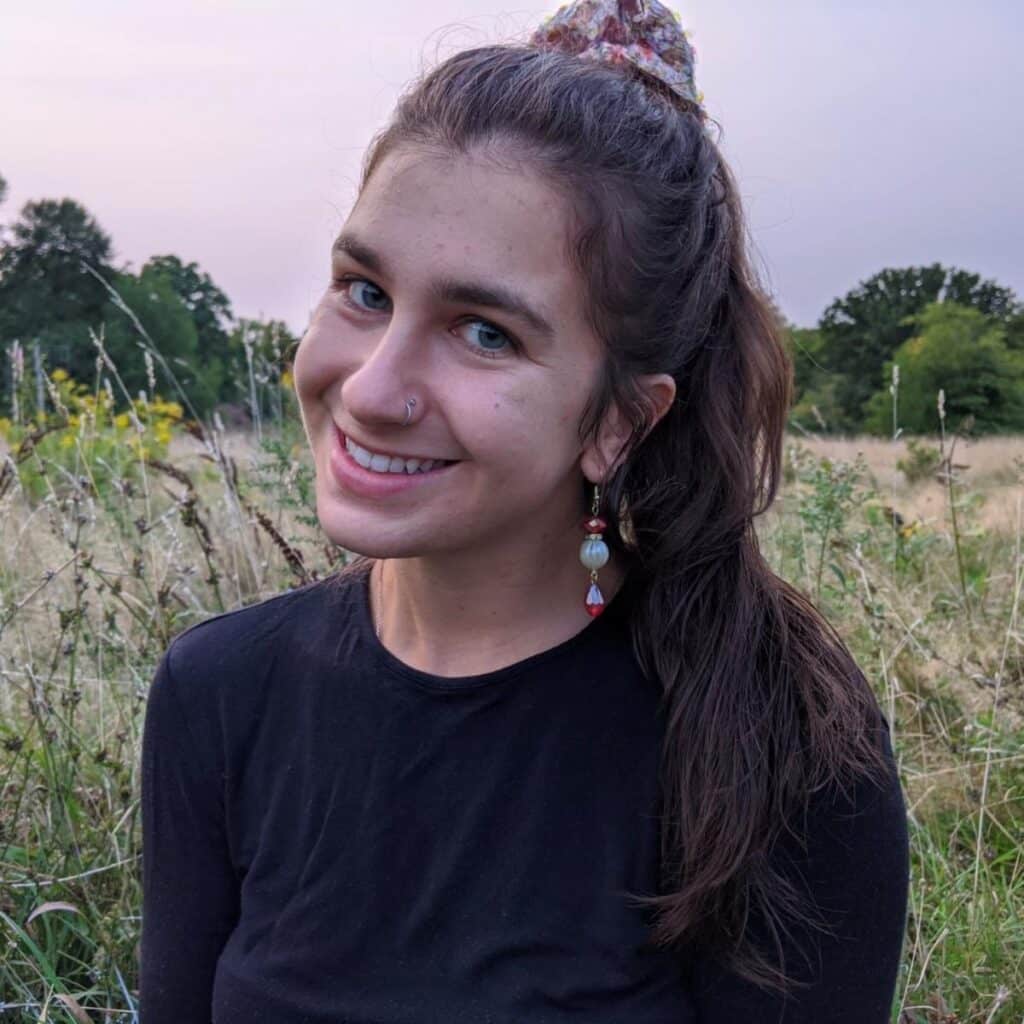
Claudia Bashian-Victoroff, Holden Forests and Gardens
As a fungal ecologist at Holden Forests and Gardens I focus on the role of soil fungi in urban canopy restoration. I am excited to support these efforts in my home city of Cleveland, OH. I am interested in how symbiotic mycorrhizal fungi can improve tree resilience to environmental pressures in human impacted landscapes. Beyond my research, I enjoy discussing the importance of trees and fungi with diverse audiences through teaching, writing, and mentorship. Outside of work I enjoy rock climbing, hiking, and dancing with my friends.

Lydia Jahn, Holden Forests and Gardens
My research focuses on belowground community structure several years post-planting in urban canopy restorations. Determining the soil fungal community at restoration sites will inform how these communities might be influencing the growth and survival of urban canopy trees. Ultimately, I am passionate about conservation and my main career goal is to practice environmental law. I hope to take what I have learned while working at Holden with me to law school and my career beyond. Outside of work, I enjoy hiking in new places (this photo was taken in Iceland!) and watercolor painting.

Chad Rigsby, Bartlett Tree Experts Laboratories
Based in Chicago and partnered with The Morton Arboretum, my applied research is focused on Midwestern-centric pest, soil, and plant issues. This work leads to best management practices for our Midwestern Bartlett Arborists and contributes to the green industry at large. My primary research interests include systemic defense signaling in trees, development of systemic-induced resistance as a tree protection tool, tree physiological responses to abiotic stress and sustainable landscape development. Outside of work I enjoy playing guitar, cooking, hiking, and camping.
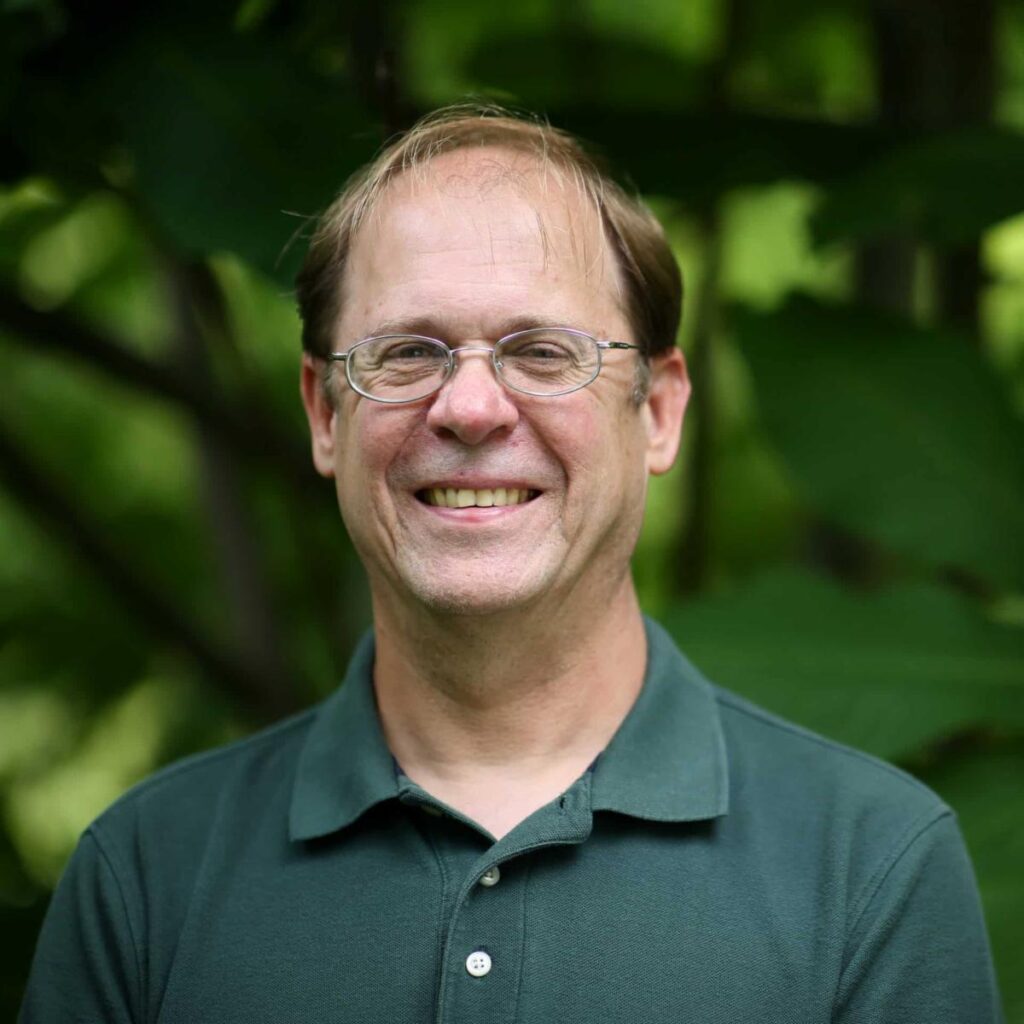
David J. Burke, Holden Forests and Gardens
I am the Vice President for Science and Conservation at Holden Forests & Gardens, and the principal investigator of Holden’s soil ecology and forest pathology lab. Our lab is involved in the study of beech leaf disease, a new forest pathogen sweeping across North America. Although I’ve recently served as a forest pathologist out of need, I am a soil ecologist at heart, primarily interested in the interactions between plants and the microorganisms that live in soil, like the mycorrhizal fungi that form mutually beneficial relationships with plants. When I am not researching forests, I enjoy walking my two chihuahuas.
Looking forward
In the coming weeks we will use the soil collections that we collected this past fall to identify the fungi that are likely forming associations with these trees. We expect that trees that received added forest soil inoculum will have more beneficial soil fungi in their soils then trees that did not receive inoculum. By identifying these fungi, we will be able to understand the effectiveness of our inoculation for inducing mycorrhizal associations!
Please don’t hesitate to contact me with your questions, pictures of trees, and spring planting updates!
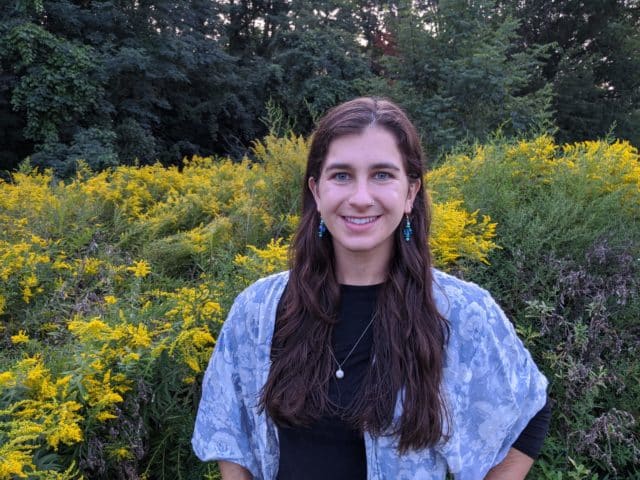
Claudia Bashian-Victoroff, MS
Research Specialist
I am a fungal ecologist focused on connections between soil fungi and tree health. My research couples field collections with modern molecular identification methods to investigate ectomycorrhizal species diversity and function. As a research specialist in Dr. David Burke’s lab at the Holden Arboretum, I support research on soil ecology and forest pathology. Currently, I focus on the role of soil fungi in urban canopy restoration in Cleveland, OH. Trees growing in urbanized environments are subject to pressures such as habitat fragmentation, exposure to heavy metals, and soil compaction. Mycorrhizal fungi can enhance plant growth, disease resistance, and drought tolerance; therefore, it is necessary that we establish a better understanding of how these fungi might improve outcomes of urban restoration efforts. Beyond this, I enjoy discussing the importance of fungal research and conservation with diverse audiences through teaching, writing, and mentorship.
